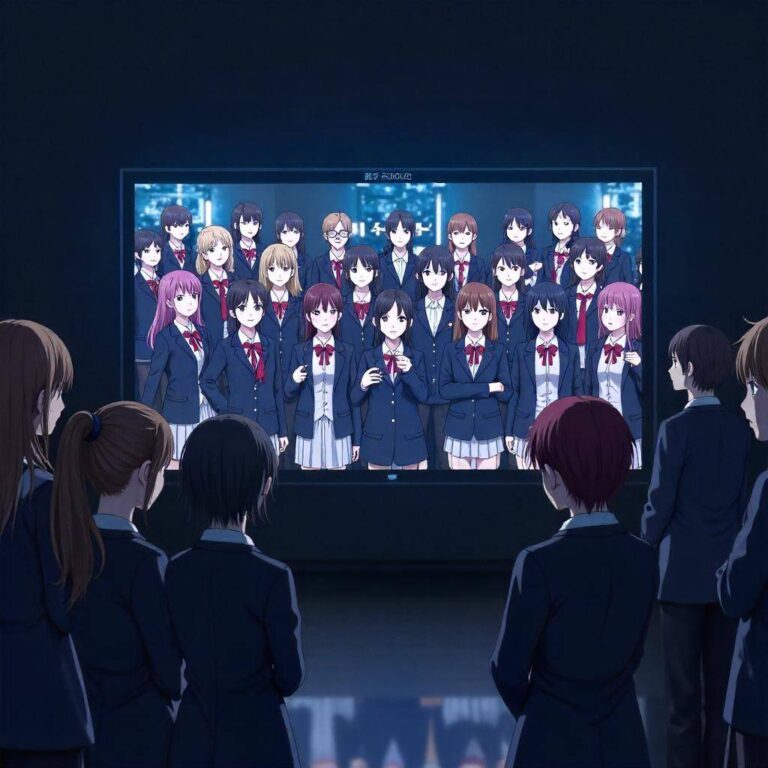Reader’s Question:
Why has Demon Slayer become so popular among elementary school students and children? Isn’t it quite gruesome with all the blood, decapitations, and severed limbs?
Understanding the Phenomenon of Demon Slayer Among Kids
When it comes to the captivating world of anime, few titles have seen the meteoric rise in
popularity that “Demon Slayer: Kimetsu no Yaiba” has experienced, particularly among elementary school students and children. You might wonder, given its storyline steeped in horror, bloodshed, and violence, how it became a household name, especially among the younger demographic. As someone raised in a culture that thrives on both Japanese and American humor, I’m here to share insights from various angles, diving into the factors that contribute to its popularity, while also bringing some personal anecdotes and observations into the mix.
The Perfect Timing
To understand the surge in popularity of “Demon Slayer,” we need to look back at the context in which it became widely accessible. The COVID-19 pandemic forced families into their homes, leading to a significant increase in streaming services. During this time, “Demon Slayer” was trending and making waves due to its high-quality animation, engaging storytelling, and deep emotional undercurrents. Parents, looking for content to entertain their children while they were stuck at home, often turned to this new sensation. It’s fascinating how the pandemic altered viewing habits and fostered new discussions in family settings. For many parents, sharing an anime like “Demon Slayer” with their children became a bonding experience. This dynamic often led to children seeking out the show to be part of their peer conversations, a classic case of wanting to fit in with friends discussing the latest episodes.
Blood and Decapitation: A Cultural Context
Now, you might be thinking, “How can parents allow their kids to watch something so gory?” It’s essential to understand the cultural context here. Japanese media, including anime and manga, has a long history of portraying violence and death. Think back to classics like “Dragon Ball,” where characters engage in epic battles that result in significant injuries. The difference lies in the way these themes are presented. “Demon Slayer” balances its intense scenes with profound emotional arcs and themes of family, resilience, and the fight between good and evil. The blood and violence can be shocking, but they serve a narrative purpose, often highlighting the stakes involved in the fight against demons. The emotional investment in characters like Tanjiro, Nezuko, and Zenitsu offers viewers a reprieve from the gruesomeness, allowing them to engage with the story on a more profound level. From a psychological standpoint, children are often drawn to stories that evoke strong emotions. They may not fully grasp the stakes of decapitations and bloodshed, but they can relate to themes of loss, friendship, and the desire to protect loved ones. It’s this emotional undercurrent that keeps them coming back for more, despite the outward violence.
Main Characters: Engaging and Relatable
Character development plays a crucial role in why “Demon Slayer” resonates with young audiences. Each character has distinct, relatable traits that make them appealing. Take Tanjiro Kamado, for example. His kind-hearted nature, deep sense of responsibility, and unwavering resolve to save his sister Nezuko and protect others draw viewers in. Children often look up to heroes who embody these qualities. Nezuko, on the other hand, as a demon grappling with her identity and longing to protect her brother, introduces themes of acceptance and the struggle against one’s darker nature. This duality can resonate with children who might feel torn between different aspects of their personality or who have experienced sibling relationships that are both loving and challenging. Moreover, Zenitsu’s character adds a comedic element that many young viewers can appreciate. His cowardice and over-the-top reactions provide a humorous contrast to the show’s darker themes, allowing children to find levity amid the seriousness. The balance of humor and gravity in character dynamics keeps the content accessible for younger audiences, making it easier for them to process the more intense moments.
Storytelling Techniques That Hook the Audience
“Demon Slayer” employs storytelling techniques that appeal to all ages, making it a binge-worthy series. One of these techniques is the use of cliffhangers. Each episode often ends with a suspenseful moment that leaves viewers eager for resolution. This strategy is effective for children; they crave closure and excitement, driving them to watch the next episode. Additionally, the animation work by Ufotable is nothing short of breathtaking. The fluidity of battle scenes and the vibrant colors create a visual feast that captivates both younger and older audiences. The art style, along with the emotionally charged soundtrack, enhances the overall viewing experience, making even brutal fight scenes feel like an art form. From my personal experience, I remember watching anime as a kid and being drawn in by the stunning animation and soundtracks. Moments where characters faced overwhelming odds felt more intense and impactful due to the artistry involved. I often felt like I was living through those moments myself, an experience that “Demon Slayer” successfully replicates.
The Role of Community and Peer Influence
The influence of community plays a significant role in “Demon Slayer’s” success among children. As kids discuss the latest episodes in school or during playdates, it creates a culture of shared interest. This communal engagement often leads to peer pressure to watch the show; kids want to be part of the conversations, to share in the excitement and theories about characters and plot twists. Social media platforms like TikTok and YouTube have also transformed the way anime is consumed. Content creators often share breakdowns, reviews, and fan theories that further fuel interest in the series. Kids see their favorite influencers discussing “Demon Slayer,” which legitimizes their interest and encourages them to engage with the show. As someone who enjoys sharing my favorite comedy bits and stand-up routines with friends, I can relate to this phenomenon. There’s a special joy in exchanging thoughts and theories, and it grows even richer when you have a community around you.
Practical Advice for Parents and Guardians
If you’re a parent contemplating whether or not to introduce “Demon Slayer” to your children, here are some practical insights: 1. Watch Together: Make it a family activity. Watching the show together allows you to contextualize the themes and discuss any troubling scenes. This can lead to deeper conversations about the narrative and the moral lessons embedded in it. 2. Assess Content: Research and understand the themes of the show and its implications. Knowing what to expect can help you address any concerns or questions your child might have. 3. Encourage Dialogue: If your child has seen the show, encourage them to share their thoughts and feelings about it. Ask open-ended questions to help them process the emotional aspects of the story. 4. Explore Beyond the Show: Consider introducing manga adaptations, light novels, or fan art as a way to engage with the story beyond the screen. This can broaden their understanding and appreciation of the narrative as a whole. 5. Recognize Different Sensitivities: Every child is different. What might be acceptable for one might be distressing for another. Be attentive to your child’s reactions and be prepared to adjust your approach based on their comfort level.
Conclusion: A New Wave of Anime Appreciation
“Demon Slayer” has undoubtedly carved out a significant space in the hearts of young viewers, and its success story is a testament to the power of storytelling, character development, and community. As an anime enthusiast, it’s thrilling to see younger generations embracing anime and engaging with its rich narratives. The way “Demon Slayer” blends humor, heart, and horror sets a precedent for future anime shows aiming to capture similar audiences. As the world of anime continues to evolve, I encourage both viewers and creators to explore new narratives and push the boundaries of storytelling. Whether you’re a parent, a fan, or a creator, sharing experiences and insights can enrich our understanding of this vibrant medium. If you’ve watched “Demon Slayer” or have other favorites that resonate with you, I’d love to hear your thoughts and experiences! Let’s keep the conversation going.



